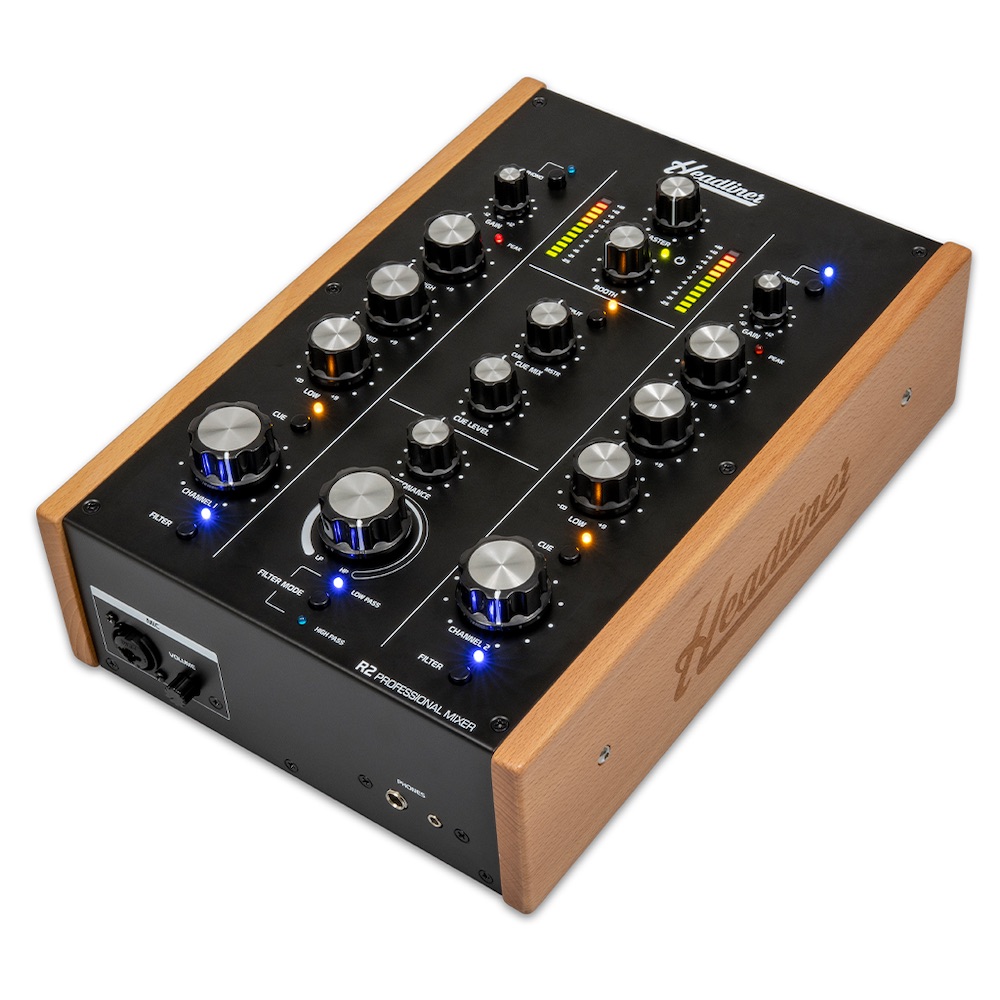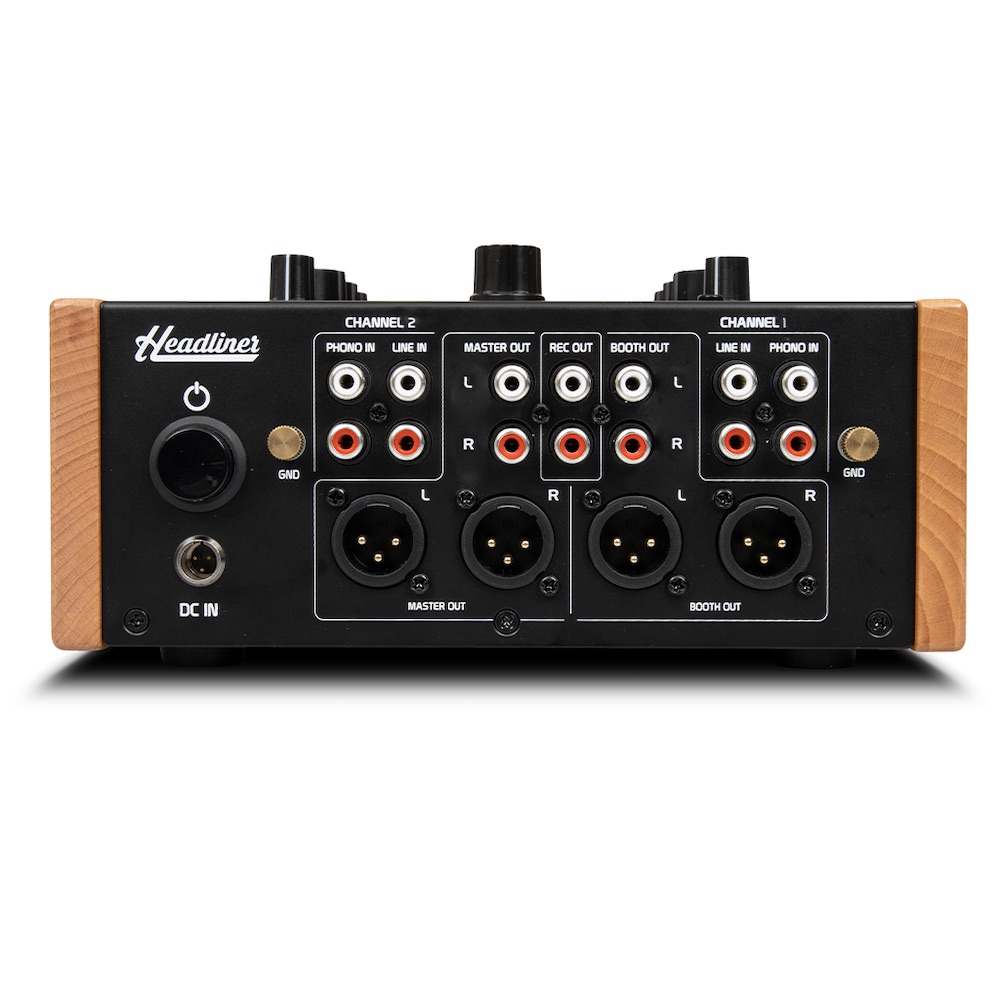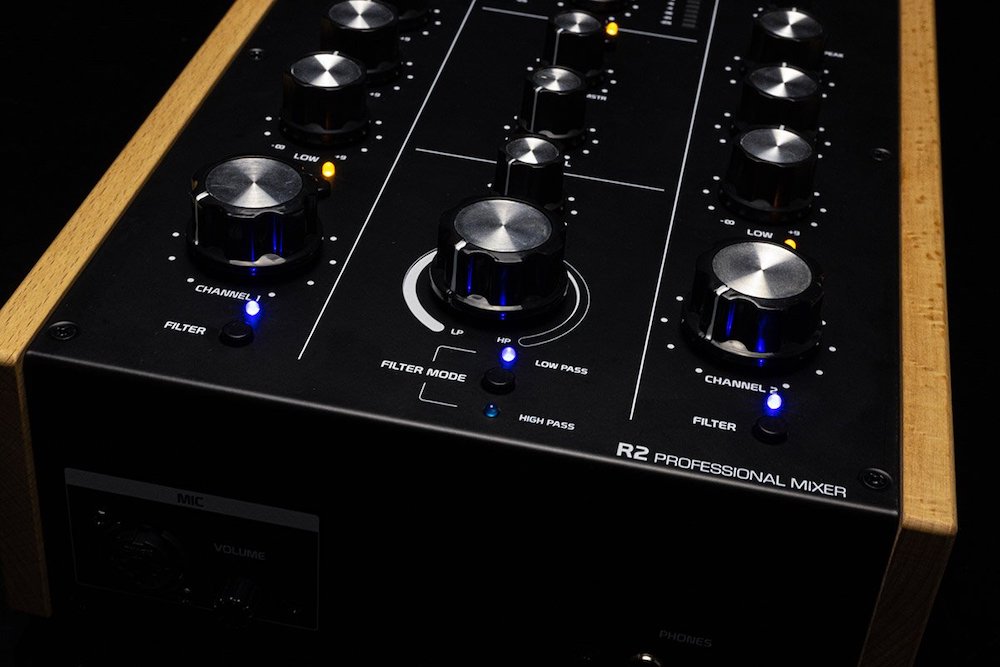Headliner R2 review | Juno Daily
A debut DJ mixer release from a young LA brand, the Headliner R2 provides more competition in the entry-level rotary mixer market. Greg Scarth puts it to the test.

You’d be forgiven for not having heard of Headliner before. The young LA brand’s output so far has consisted mainly of cases and stands, but the release of the Headliner R2 rotary DJ mixer brings Headliner into more glamorous territory. The R2 is an entry-level rotary mixer, part of a wave of more affordable mixers which aim to bring the ergonomic hands-on appeal of boutique audiophile mixers to a wider audience.
The overall design of the R2 is slightly different to what we’ve seen in other more affordable rotary mixers like the Omnitronic TRM-202 MK3 and Ecler WARM2. The R2 is a two-channel design with three-band isolator-EQ per channel, but it doesn’t feature a three-band isolator which you’d typically associate with rotary mixers (effectively a series of filters on the master output, giving you control of the bass, mids and high frequencies coming out of the mixer). Instead, there’s a multi-mode resonant filter section, which can be assigned to either channel or both channels simultaneously, and switched between low-pass and high-pass modes. Apart from that, things are fairly conventional, with both channels offering switchable line and phono inputs suitable for any media player or turntable. There’s a microphone input on its own channel, and versatile monitoring control. The look draws heavily on retro mixer designs, with nice large knobs for the key level controls and filter cutoff frequency, an understated black metal case and etched wooden side cheeks for that vintage look.

Like most small DJ mixers, the R2 is straightforward to set up. Power comes from an external PSU and connections are made around the back for your chosen sound sources and outputs to an amp or powered speakers. Headphone outputs and microphone input (if required) are found on the front panel, with the latter over a combo TRS/XLR socket suitable for any dynamic mic. This is also where you’ll find the mic level control, keeping the top panel as clear as possible for the main controls: channel gains, master and booth output levels, cue mix and level controls (with the option for split cueing), cue select on each channel, plus the aforementioned large channel level and filter cutoff knob. The main LED meters show the master output level, while small peak LEDs on each channel help you keep levels under control.

The R2 is clearly a budget mixer, with the slightly limited feature set that you’d expect at this price point, but it doesn’t feel cheap. Controls are nicely weighted and the ergonomics are good, with plenty of space around the EQs, channel volume controls and the central filter. In use, it lives up to what you’d expect from a rotary mixer in this kind of price range: sound quality from the individual channels is clear and accurate, if not as sweet as you’d find from a more expensive mixer like the Ecler WARM2, while summing during mixes and blends is precise and controllable thanks to the rotary level controls.
The biggest unique selling point of the R2 is the inclusion of those three-band channel EQs and the assignable multi-mode filter. We’re more used to seeing three-band isolators on rotary mixers simply because that’s how it was generally done on vintage DJ setups back in the 70s. The R2’s channel isolator-EQs allow you to cut each frequency band completely, but of course this doesn’t have quite the same effect during blends as each channel is controlled separately (with a conventional isolator setup, you can have multiple tracks running simultaneously and adjust the overall mix with the isolator knobs). Meanwhile, the filter is a sweet design, switchable between high-pass and low-pass circuits to cut the lows or highs respectively, with adjustable resonance to tweak the peak of the filter curve. Sonically, it’s impressive, with the small caveat that there’s a slight popping sound when engaging and disengaging it, meaning you have to be careful with your timing. It’s different, but not necessarily better or worse than a conventional isolator setup.

If you’re in the market for an entry-level rotary mixer, the clear choice now is between the R2 and Omnitronic’s TRM-202 MK3. There are a couple of minor features which make the R2 slightly more user-friendly in certain areas – like the combo jack for the mic input and the dual headphone outputs – but realistically the choice mainly comes down to your preference in EQ and filters. Do you prefer the R2’s three-band isolator-EQ and multi-mode filter, or the TRM’s more conventional two-band EQ and three-band isolator? There’s no right or wrong answer, only personal taste; the R2 gives you a little more control over the tonal balance of individual tracks, while the TRM gives a bit more of a performance focus for blends and hands-on isolator tweaking. Both are solid options for newcomers to rotary mixers.
Greg Scarth
You may also like…




